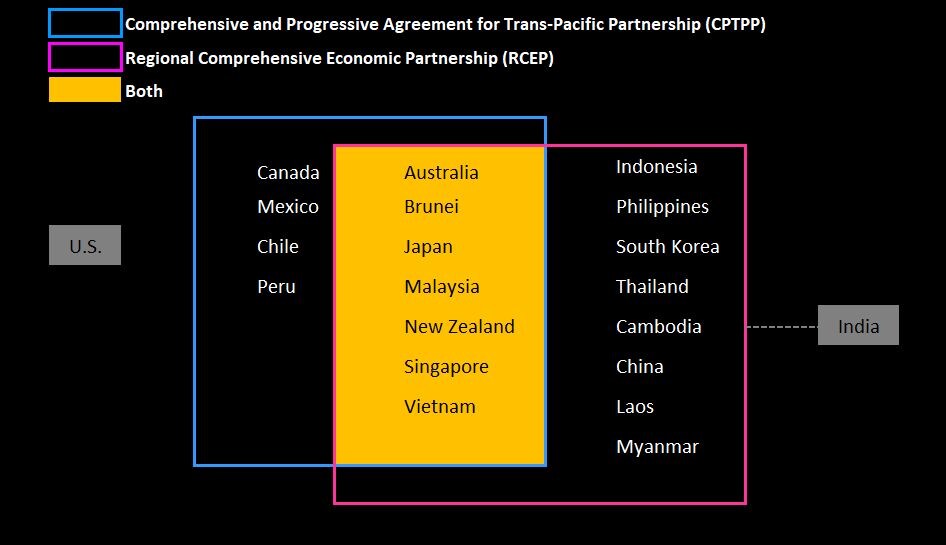
It’s key to US President Joe Biden’s efforts to counter China’s clout in Asia in the economic sphere by partnering with other countries. (Other regional groups the US belongs to such as the Quad focus on security.) The IPEF has four pillars: supply-chain resilience; clean energy, decarbonization and infrastructure; taxation and anti-corruption; and fair and resilient trade. The Biden administration also has been working to include digital issues like localization and cross-border flows of data. But details are hazy and the administration has stressed it won’t include lower tariffs or better access to US markets. “Through this initiative, we aim to contribute to cooperation, stability, prosperity, development, and peace within the region,” the countries said in a joint statement announcing the IPEF.
Along with the US the “initial partners” are Australia, Brunei, India, Indonesia, Japan, South Korea, Malaysia, New Zealand, the Philippines, Singapore, Thailand, and Vietnam. US National Security Advisor Jake Sullivan said May 22 that Taiwan “won’t be part of the launch.” Taiwan’s Ministry of Foreign Affairs expressed regret at the comment. (China considers the democratically run island part of its territory.) China also isn’t party to the new grouping.
3. Does Biden have domestic support?
Some in Congress have criticized the IPEF as lacking substance, with senators from both parties blasting Biden’s trade agenda at a March hearing and grilling US Trade Representative Katherine Tai over a shortage of ambition to negotiate new agreements. The head of the US Chamber of Commerce, the largest American business-lobbying group, also issued a scathing criticism of Biden’s trade policy in May, saying that the administration is “consumed by caution and internal reviews.”
4. How has China reacted?
Chinese Foreign Minister Wang Yi has blasted the US effort as “doomed to fail.” In a May 22 statement, the ministry said the strategy “is under the banner of ‘freedom and openness,’ but it is keen to gang up and create ‘small circles’” in an attempt to contain China.
5. What happened to the RCEP?
What began in 2012 as a routine harmonizing of agreements between members of the Association of Southeast Asian Nations, or Asean, is now — with the inclusion of China — the world’s biggest free trade bloc. The Regional Comprehensive Economic Partnership, to give its full name, took effect Jan. 1. Broadly speaking, it aims to lower tariffs and other barriers to the trade of goods among the 16 countries that were in, or had trade deals with, Asean. That dropped to 15 after India pulled out in 2019, saying it wanted to protect service workers and farmers. There were also worries the country would be flooded by cheaper goods from China. The US hasn’t been deliberately excluded from the RCEP; it would first need to reach a free-trade arrangement with Asean, then apply to join. Meanwhile, the deal firmly underscores China’s dominance in the region’s trade. China has been looking to further integrate itself with its neighbors as former US President Donald Trump urged them to shun Chinese infrastructure loans and 5G technology.
6. How does the RCEP compare to the TPP or IPEF?
Unlike the TPP, or Trans-Pacific Partnership, and other U.S.-led trade deals, the RCEP doesn’t require its members to take steps to liberalize their economies and protect labor rights, environmental standards and intellectual property. Wilbur Ross, who was Trump’s commerce secretary, called the RCEP a “very low-grade treaty” that lacks the scope of the TPP. But the RCEP’s implementation illustrates America’s diminished clout and could make it harder for U.S. businesses to compete in the vast region. There’s not enough known yet about the IPEF to judge how it will ultimately compare.
7. What happened to the TPP?
It became the the CPTPP, or Comprehensive and Progressive Agreement for Trans-Pacific Partnership. Signed in March 2018, as of late last year it had entered into force for eight of the 11 signatories. They decided to press on after Trump pulled out, saying he wanted to get better deals bilaterally. The UK applied to join last year, as have China and Taiwan.
More stories like this are available on bloomberg.com

